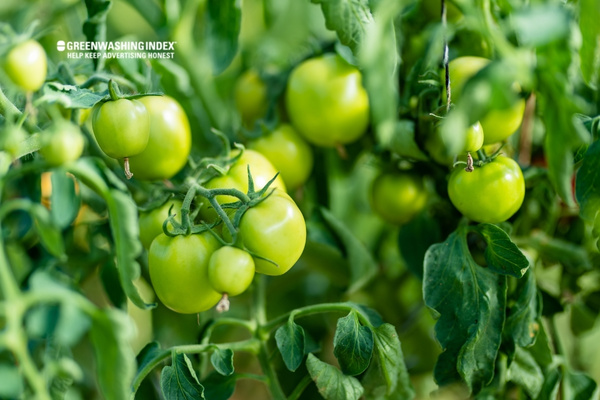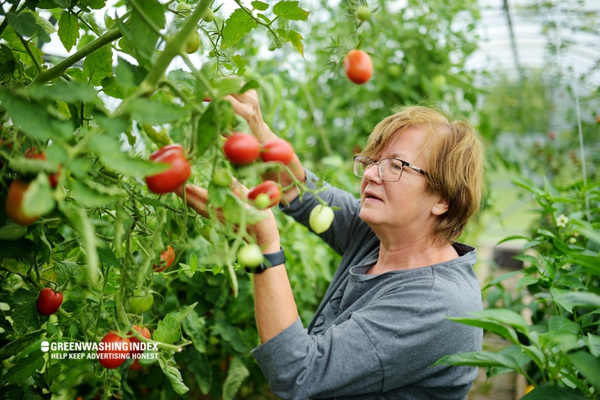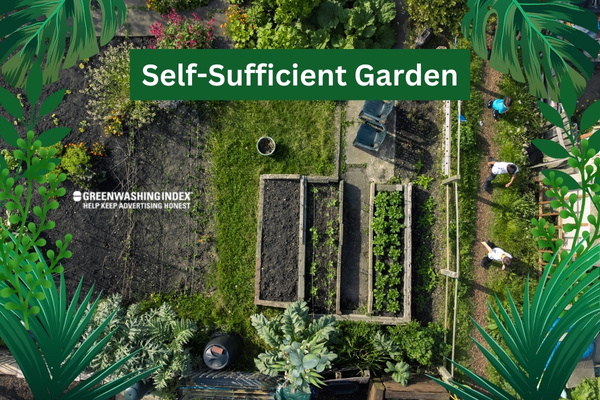When the spring sun starts to erase the chill of winter, I can’t help but feel an itch for soil between my fingers. There’s a sense of awakening, not just in the blooming flowers but within us as we ponder more sustainable living options. Think about it; could a self-sufficient garden be that step towards greening up your lifestyle? The allure of picking a sun-warmed tomato right from your backyard isn’t just about flavor—it’s about taking control.
Starting a self-sufficient garden this spring is like opening a door to abundance. Imagine slicing into fresh cucumbers for lunch, seeing your pantry stocked with jars of homegrown green beans, or simply enjoying the sight of bursting colors from your own flower patch. Myriad joys wait in transforming a small seed into something extraordinary, with benefits going far beyond mere aesthetics.
Here’s What You’ll Discover:
- The sheer exhilaration of being self-reliant
- Practical tips on saving dough while eating fresh
- How you’ll ensure high-quality grub—safety never tasted so good
- Organic gems: harvest health benefits right from your backyard
- A sustainability salute—your effort in shading the earth green
- Unearth mental bliss and physical zest through nature’s own therapy
The Joy of Self-Reliance
Creating a self-sufficient garden isn’t just another springtime hobby; it’s a step toward embracing autonomy and enjoying the fruits (and veggies) of your labor.

There’s nothing quite like the feeling you get from knowing that, with your own two hands, you’ve cultivated not just plants, but independence. This spring, consider transforming your space into a sanctuary of self-reliance and watch as it blossoms along with your flowers and greens.
Personal Empowerment
The journey to creating my self-sufficient garden has been about so much more than just planting seeds. It’s about the empowerment that comes from mastering my own little slice of earth:
- Confidence: Each little sprout fortifies my belief in my ability to nurture life.
- Self-reliance: I’m less tethered to the grocery store aisles whenever I fancy some fresh basil or kale.
- Family bonding: Sharing the experience with family members, especially kids, teaches them valuable skills too.
When you’re reliant on yourself for something as critical as food, each harvest brings not only fresh produce but also an incredible sense of fulfillment. Knowing exactly where my food comes from eliminates that nagging worry about food security.
My garden might be small compared to a farm, but let me tell you – pulling up those root vegetables or plucking tomatoes off their vines gives me an exhilarating rush of joy. Realizing I can reduce my family’s dependency on supermarkets and increase our resilience against supply chain disruptions? That’s priceless.
Contribution to Sustainable Living
The day I decided to transform part of my backyard into a self-sufficient garden was the day I became not just a gardener but also an active participant in promoting sustainable living:
- Eco-friendly practices: By avoiding harmful pesticides and fertilizers commonly used in industrial agriculture.
- Water conservation: Using rainwater collection systems ensures every drop counts.
- Composting: Turning kitchen scraps into gold for plants reduces waste and enriches the soil without chemicals.
- Community enrichment: Sharing surplus crops with neighbors doesn’t just feed more people; it promotes community resilience.
Becoming self-sustaining isn’t merely about personal gain—it’s about contributing positively to environmental well-being. Every plant grown is rooted in an ethos that respects our planet—a small effort when multiplied across communities becomes a tidal wave for positive change.
Having this lush green space teeming with life is both tranquil and invigorating—a daily reminder that by simply returning to basics and embracing nature’s rhythm, we’re supporting a greener tomorrow while simultaneously reaping today’s rewards.
My self-sufficient garden is more than just produce; it’s proof positive that even our smallest actions towards sustainability can bloom into significant change.
Benefits of a Self-Sufficient Garden
Creating your self-sufficient garden this spring is not just about getting your hands dirty and enjoying the outdoors. There’s a whole host of tangible benefits that come with cultivating your own patch of earth.
Let’s dive in and explore how tending to a self-sufficient garden can make a real difference in your life, particularly when it comes to saving money and ensuring the quality and safety of your food.
Money Savings
Now, I know we’re all looking for ways to stretch our dollars, right? Well, imagine if I told you that investing some time in spring gardening could keep more money in your pocket over time. Here’s the lowdown:
- Reduced Grocery Bills: Each seed packet or young plant comes at a fraction of the cost compared to buying mature produce at the store. Over months, those savings really add up.
- Less Food Waste: When you grow what you eat, there’s an incentive to use every last carrot top or tomato – nothing goes to waste.
- Long-Term Investment: Perennial fruits and vegetables such as apples or asparagus can provide harvests for many years after one initial purchase.
- Preserving Surpluses: You can freeze, can, or dry excess produce during abundant seasons for use throughout the year.
Quality Control and Safety
There’s something incredibly rewarding about biting into something you’ve grown yourself. You know every single step that went into producing it! Check out these perks:
- No Pesticides or Chemicals: Unless you choose otherwise, no harmful substances will taint your produce. This means safer food on your table.
- Tailored Organic Practices: You’re in control – from composting kitchen scraps for fertilization to employing natural pest-control strategies. Keep track of:
- Soil health: Utilize organic compost rather than chemical fertilizers
- Seed selection: Pick non-GMO or heirloom varieties
- Traceability: If there’s ever an issue with something you’ve eaten from your garden (which is pretty unlikely), tracing its source is straightforward – it’s just outside!
By focusing on these aspects of a self-sufficient garden – reducing expenses while enhancing the safety and goodness of what nourishes us – we pave our way towards healthier lives and wallets!
Growing Your Organics
When you hear folks preaching about the wonders of spring gardening, what comes to mind? Sure, there’s a bit of work involved. But trust me; when I bite into that juicy tomato straight from my backyard, it all becomes worth it. That’s what we’re aiming for in our self-sufficient gardens—nurturing not just plants but also our health and taste buds.

Health Benefits
There’s more to organic produce than just being a buzzword at fancy grocery stores. When you grow your own food organically, you’re stepping into a world of health perks that’ll make your doctor give you the high-five on your next check-up. Let’s break it down:
- No Nasty Chemicals: One thing I dig about growing my veggies is knowing they’re free from harsh pesticides and synthetic fertilizers.
- Nutrient-Packed Goodness: Organics grown in my backyard have this knack for being nutrient-rich. It’s because they’re given the time to mature naturally without any artificial boosts.
- Heart-Happy Foods: Some studies show that organic vegetables can promote heart health thanks to higher levels of certain antioxidants.
- Weight Management: Munching on vegetables from your self-sufficient garden could help keep those pounds off since they’re low in calories and high in fiber.
Honestly, harvesting a basket full of greens and veggies I’ve grown myself gives my well-being an extra shot of vitality—you can’t bottle this kind of freshness.
Freshness Guarantee
Now let’s chew on something else—freshness. Do you ever notice how some store-bought tomatoes taste like crunchy water? Well, not mine:
- Picked at Peak Ripeness: My garden treats me with fruits and veggies harvested at their peak, which means maximum flavor and nutrition for my table.
- Zero Transport Time: When produce travels miles to reach markets, it loses some freshness along the journey. With zero distance between my garden and kitchen bench—problem solved!
Here’s what makes garden-to-table so darn special:
- No more bland or wilted lettuce—they’re crisp because they travel less than 10 feet rather than 10 miles.
- Those strawberries? They’re so sweet they’ll send store-bought ones packing with envy.
- The peas snap with such gusto; that you’d think they were grown by Mother Nature herself (well, technically…).
So really, creating a self-sufficient garden is like placing happiness on a tap right outside your door—and who wouldn’t want that come springtime?
Environmental Perks
Taking the plunge into spring gardening by creating a self-sufficient garden comes with some far-reaching environmental perks that just might make you feel like a green-thumbed hero. Not only do you get to nurture plants, but you also play a direct role in nurturing the planet. Let’s dig into these benefits that are as good for Mother Earth as they are for our souls.
Reduced Carbon Footprint
One of the most significant perks of growing my own produce has been knowing that I’m taking strides in reducing my carbon footprint. Here’s how breaking ground in your backyard makes a difference:
- Less Transport: The veggies and fruits from my self-sufficient garden don’t need to travel hundreds or thousands of miles to get to my plate. Every tomato or cucumber grown at home is one less item on a gas-guzzling truck or plane.
- Minimal Packaging: I’ve bid farewell to plastic bags and containers; my produce goes from garden to table without unnecessary packaging that harms our environment.
- Sustainable Practices: I control what goes on and into my garden, opting for natural pest control and organic fertilizers over harmful chemicals that can leech into our water supply.
Investing time in your self-sufficient garden isn’t just about getting your hands dirty; it’s about lending Earth a helping hand too!
Conservation of Biodiversity
Picture this – each seed planted in the tranquility of your garden is like casting a vote for biodiversity conservation. A self-sufficient garden turns out to be more than just a hub for fresh produce – it becomes:
- A Sanctuary for Plants: My varied plant choices create a micro-habitat that could support an array of insects, birds, and other wildlife that depend on plant diversity to thrive.
- Preservation Efforts: By including heirloom varieties and locally adapted plants, I am participating in conserving plant genetics unique to different regions or those being pushed out by commercial agriculture.
- Educational Grounds: Let me tell you, nothing beats the feeling when neighbors peek over the fence filled with curiosity about those unusual tomatoes or rare herbs – It sparks conversations on preserving diverse plant species!
Embracing biodiversity isn’t just crucial—it’s immensely rewarding too! And remember, every little bit contributes towards making Earth rich with life not just now but also secures it for future generations.
The Therapeutic Influence of Gardening
Gardening isn’t just about bringing forth a bounty of fresh produce—it’s also a pathway to holistic wellness. It’s no secret that when you’re out there with your hands in the dirt, nurturing new life from the earth, there’s something incredibly calming and grounding about the whole process. But beyond that feeling of tranquility lies tangible benefits for both the mind and body.

Mental Health Benefits
Delving into why so many gardeners call their plot of land their happy place reveals some awe-inspiring mental health perks:
- Stress Reduction: There’s something inherently soothing about the act of gardening. The methodical tasks, like weeding or planting seeds, can become almost meditative. It’s akin to nature’s own brand of stress therapy.
- Mood Enhancement: Regular exposure to sunlight can boost your serotonin levels—that coveted ‘feel-good’ hormone—leading to a happier state of mind.
- Cognitive Function Improvement: Keeping track of planting schedules and strategizing plant care sharpens mental acuity and can even build resilience against age-related cognitive decline.
- Nature Connection: Our fast-paced digital world often leaves us feeling disconnected from the natural environment. Gardening renews that connection, fostering an appreciation for the cycles of life and growth.
Physical Fitness Boost
It might not be the first thing that comes to mind when you think about staying fit, but gardening is actually an excellent way to stay active:
- Full Body Workout: From digging to lifting bags of soil, gardening involves all sorts of physical labor that engages multiple muscle groups.
- Flexibility & Dexterity: Those intricate tasks such as pruning or harvesting small veggies require fine motor skills and enhance hand-eye coordination.
- Endurance Training: Time flies when you’re enjoying yourself in the garden but spend several hours at it, and it becomes a real endurance booster without even stepping foot on a treadmill.
With every shovel full or seed planted, remember: You’re cultivating not just plants in your self-sufficient garden but also nurturing your own physical and mental well-being. Whether it’s towering sunflowers that lift your spirits high or home-grown tomatoes contributing towards better health—it all starts with getting back to basics in your backyard oasis.
FAQs
What basic tools are needed to start your self-sufficient garden?
To kick off your garden, you’ll need some simple tools: a spade, a hoe, pruning shears, a watering can or hose, and gloves. You could grab some seed starter pots, too.
How much time is required to maintain a self-sufficient garden?
The time can vary widely based on the size and complexity of your garden. Expect to dedicate at least a few hours each week to planting, weeding, watering, and harvesting.
Can I create a self-sufficient garden in a limited space, or do I live in an apartment?
Absolutely! You can start with container gardening or vertical gardens. They’re perfect for balconies or small patios – so go ahead and flex that green thumb!
Conclusion
Embracing the world of self-sufficiency, especially during spring, is more than a hobby—it’s a lifestyle shift. Cultivating my own self-sufficient garden has brought numerous benefits that extend well beyond the boundaries of my backyard. It has given me control over what I eat, where it comes from, and how it’s grown.
The reduction in grocery bills and the decrease in environmental impact are tangible results that reinforce the joys of an independent lifestyle. Moreover, the mental clarity and physical vigor I’ve gained through gardening are priceless rewards that support both body and soul.
Key Takeaway Points
- Attaining self-reliance with a self-sufficient garden enhances empowerment.
- A self-sufficient garden is pivotal for sustainable living practices.
- Significant money savings can be realized through homegrown produce.
- Quality control ensures safer, healthier food intake from your garden.



